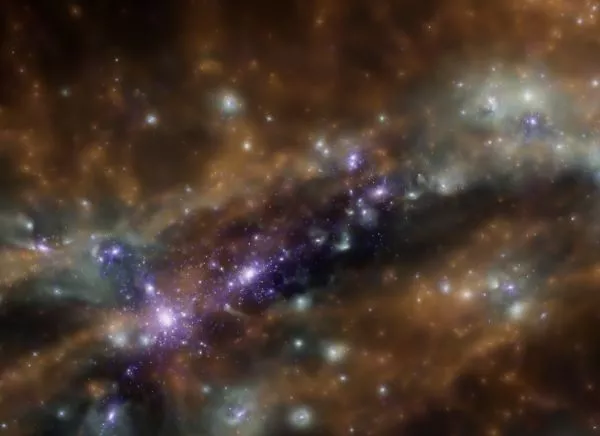Astronomers are getting some answers to an age-old question.
Source: Live Science
For decades, cosmologists have wondered if the large-scale structure of the universe is a fractal — that is, if it looks the same no matter how large the scale. After completing massive surveys of galaxies, scientists finally have an answer: No, but kind of, in a way.
In the early 20th century, astronomers — beginning with Edwin Hubble and his discovery of the enormous distance to Andromeda, the closest galaxy to our own Milky Way — started to realize that the universe is almost unimaginably vast. They also learned that we can see galaxies scattered about, both near and far. And so, naturally, a question arose: Is there any sort of pattern to the arrangement of those galaxies, or is it totally random?
At first, it looked random. Astronomers saw giant galaxy clusters, each containing a thousand or more galaxies. And there were also much smaller groups of galaxies, and galaxies hanging out by themselves. Taken together, the observations made it appear as if there were no overarching pattern to the cosmos.
And astronomers were fine with that. They had long assumed an idea called the cosmological principle — that is, that the universe is mostly homogeneous (roughly the same from place to place) and isotropic (roughly the same no matter which direction you look). A bunch of random galaxies and clusters fit right into that principle.
But in the late 1970s, galaxy surveys became sophisticated enough to reveal the beginnings of a pattern in the arrangement of galaxies. Besides the clusters, there were also long, thin filaments of galaxies. There were broad walls. And then there were the voids — vast expanses of nothing. Astronomers called it the cosmic web. This pattern would violate the cosmological principle, because it would mean that large regions of the universe did not look like other large regions of the universe.
So perhaps there was more to the story.
A universe within a universe
One proposal came from mathematician Benoit Mandelbrot, the father of fractals. Fractals are frustratingly hard to define, but they can be simple enough to intuit: They are patterns that repeat no matter how far in or out you zoom. Mandelbrot didn’t invent the concept of fractals — mathematicians had been studying self-similar patterns for ages — but he coined the word “fractal” and ushered in our modern study of the concept.
Fractals are everywhere. If you zoom in on the point of a snowflake, you see miniature snowflakes. If you zoom in on the branches of a tree, you see miniature branches. If you zoom in on a coastline, you see miniature coastlines. Fractals surround us in nature, and the mathematics of fractals have enabled us to understand a vast variety of self-similar structures in the universe.
If fractals are everywhere, Mandelbrot guessed, then perhaps the entire universe is a fractal. Maybe what we saw as the pattern in the arrangement of galaxies was the beginning steps of the greatest fractal possible. Maybe if we built sophisticated enough surveys, we would find nesting structures — cosmic webs inside cosmic webs, filling up the entire universe to infinity.
Homogenized and pasteurized
As astronomers discovered more about the cosmic web, they learned more about the history of the Big Bang, and they came up with ways to explain the existence of the large-scale patterns in the universe. Those theories predicted that the universe was still homogeneous, just on much, much larger scales than astronomers had observed previously.
The ultimate test of a fractal universe wouldn’t come until this century, when truly gargantuan surveys, like the Sloan Digital Sky Survey, have been able to map the locations of millions of galaxies, painting a portrait of the cosmic web on scales never observed before.
If the fractal universe idea is true, then we should see our local cosmic web embedded inside a much larger cosmic web. If it’s wrong, then at some point, the cosmic web should stop being a cosmic web, and a random, large-enough chunk of the universe should look (statistically) like any other random chunk.
The result is homogeneity, but on a mind-blowing scale. You have to go up to around 300 million light-years before the universe appears homogeneous.
The universe is definitely not a fractal, but parts of the cosmic web still have interesting fractal-like properties. For example, clumps of dark matter called “halos,” which host galaxies and their clusters, form nested structures and substructures, with halos holding sub-haloes and sub-sub-halos inside those.
Conversely, the voids of our universe aren’t entirely empty. They do contain a few faint dwarf galaxies, and those few galaxies are arranged in a subtle, faint version of the cosmic web. In computer simulations, the sub-voids within that structure contain their own effervescent cosmic webs, too.
So, while the universe as a whole isn’t a fractal — and Mandelbrot’s idea didn’t hold up — we can still find fractals almost everywhere we look.
Source: Live Science

































Leave a Comment
You must be logged in to post a comment.